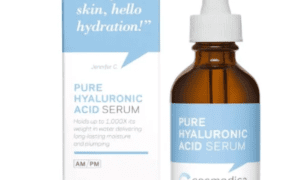It’s always the thing that you need when you don’t have it; glue! It could be for an art project, a woodwork project, or even needing to glue a wayward piece of wallpaper back to the wall. Irrespective of its need, if you don’t have glue, you can’t get anything done.
However, when you are standing in front of the glue section at your local supermarket, looking at the different brands and their strengths, you may inevitably begin to think about glue on a different level; why are some types tougher? Why can’t certain types of glue be used on wood? Also, the key question that everyone has had is, how does superglue not stick to the inside of the tube?
So, if you want to learn more about glue and how it is made, read on for a quick, jargon-free guide!
The Raw Ingredients
You may have heard that glue is made from horses’ hooves. This used to be the case, but it isn’t anymore. In 2023, synthetic polymers made by companies like Poly Chemistry are used in the manufacturing process. So, no horses are involved! Although natural polymers can be found in starches, mix the starch together with the synthetic polymers, and you will have a heck of a tough glue!
Different glues, based on their strengths, have different ingredients and measurements, so, much like baking a cake, all of these need to be weighed and checked before they are mixed.
Cooking the Glue!
In most companies, these ingredients are mixed and ‘cooked’ in huge vats or reactors, with water added to the mix. The mixture is heated and stirred to help the starch and other bits to break down and merge. As mentioned before, how long this will take will depend on the glue being made. For PVA, it is a bit quicker, whereas for super glue, it is a bit lengthier, and different tools have to be used.
Chemical Modification
Now comes the fun part, where that superglue is made different from the standard Pritt stick! This starts with the addition of a slime made by bacteria called biofilm. When this is added to glue in different concentrations, it impacts the stickiness and strength of the glue. Other bits are added, which will impact the glue drying time and its overall longevity. Most people have used glue that has needed 24 hours to dry, and this is usually impacted by the starch, the biofilm, and the material that is being glued together.
Quality Control
Have you ever heard of someone watching paint dry? Well, when it comes to glue, each vat of newly cooked glue will be tested to ensure that it matches the strength it needs, it will be timed to see how long it takes to dry, and its PH measurement will be taken.
Packaging
Now, onto the age-old question about superglue not sticking to the tube; the glues will need to be packaged in airtight containers that are dry. Why? Because it is the vapor in the air that causes glues to stick. If water vapor gets into the tubes, the glue will stick.
Once the glues are packaged and labeled, they are distributed, and the process is complete!



































